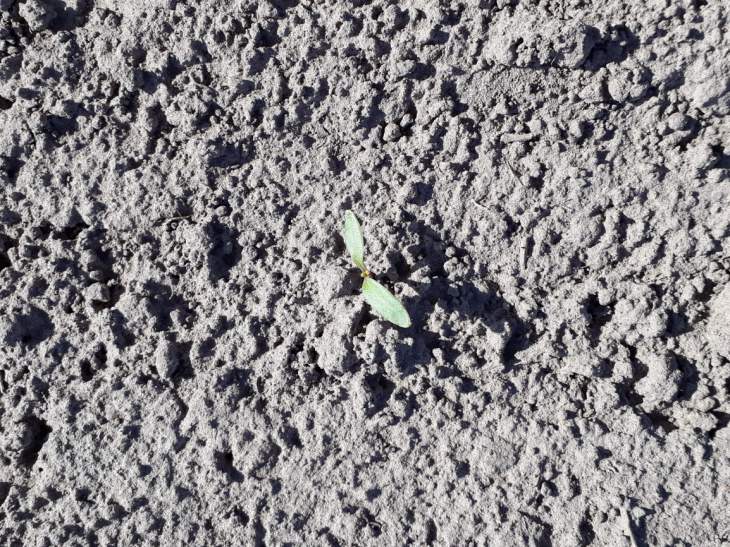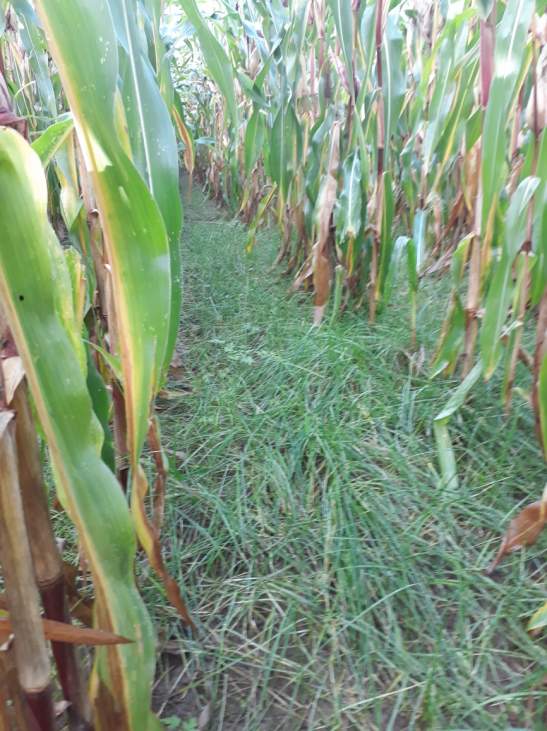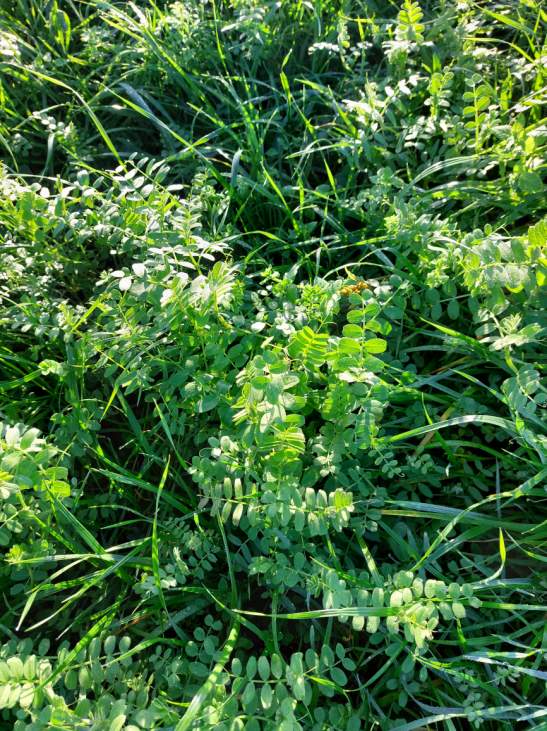Cover crops can:
-
Increase in the level of pollination.
-
Enhance the level of natural pest control. Reduce the need to use insecticides and herbicides
-
Reduce erosion, both by wind and water.
-
Reduce drift and run-off of fertilizers and pesticides into the adjacent water bodies.
-
Increase soil quality, soil life and soil health.
Pollination
Cover crops can extend seasons for beneficial insect and pollinator insects by providing a food source earlier and later in the growing season. Crops such as buckwheat and phacelia provide feed into the autumn when natural sources are declining.
Natural pest control
Reduction of insecticides
 Cover crops can be used in the protection of the fields against plague organisms, like certain nematodes. They can also provide overwintering sites for beneficial organisms, such as predators that feed on pest organisms. When choosing the cover crop used, it’s important to take plagues existing at your field or possible plagues that can be harmful in your following crop into consideration. Here you can find more information on the choice of species.
Cover crops can be used in the protection of the fields against plague organisms, like certain nematodes. They can also provide overwintering sites for beneficial organisms, such as predators that feed on pest organisms. When choosing the cover crop used, it’s important to take plagues existing at your field or possible plagues that can be harmful in your following crop into consideration. Here you can find more information on the choice of species.
To reduce the use of insecticides, we must prevent the harmful insects coming to the field or find a way to combat the harmful insects (in one or more stages of their life cycle) when they are in the field. Cover crops can play a role in both strategies. With a few examples we want to show the diversity in possibilities. This might inspire you for your own situation!
- Choice of cover crops to reduce nematodes in potatoes
- Brown Mustard (Brassica Juncea) has been used to reduce nematode populations when grown as a wintercover crop and mulched and plouged into soil prior to planting of potato crops.
- Companion cropping
- Companion crops such as berseem clover and fenugreek have been planted along with oil seed rape and confuse or restrict the cabbage stem flea beetle reducing crop loss, both are killed by frosts and so do not compete with crops in the spring.
- Trap cropping
- By planting a plant species which is similar to the crop species or preferred by the pest in the field, crop losses can be reduced. The species Solanm Sisymbriioflorium and Solanum Scabrum attract nematodes and reduce infection of potatoes.
- Tagetes (biofumigation)
More information:
Reduction of herbicides
By planting cover crops, weeds get less chance to develop to a problematic level.
An interesting example is the use of Buckwheat which is quick growing, competitive and allelopathic to reduce perennial grass weeds such as Elymus repens. It’s an annual which requires warm weather and is killed by cold temperatures (from 3°C on).
Also perennial cover crops can be used for this purpose, but keep in mind they need destruction in spring.
More information:
Erosion: wind and water
 By using cover crops, erosion is prevented by soil cover and this both for wind and water erosion. It’s more difficult for wind to reach the soil and blow away soil particles. Rain hits the cover crop first, by which the velocity of the rain is reduced. When the water reaches the soil and runs off, the velocity of the water flow is reduced, so less soil particles can flow away. Also during the run-off the velocity of the water is reduced and soil particles are stopped by the stems of the cover crops.
By using cover crops, erosion is prevented by soil cover and this both for wind and water erosion. It’s more difficult for wind to reach the soil and blow away soil particles. Rain hits the cover crop first, by which the velocity of the rain is reduced. When the water reaches the soil and runs off, the velocity of the water flow is reduced, so less soil particles can flow away. Also during the run-off the velocity of the water is reduced and soil particles are stopped by the stems of the cover crops.
Typically cover crops are sown after harvest of the main crop. But in the case of (sugar) beets, wind erosion is a problem for the seedlings: they are very vulnerable and the sandy particles in the wind can kill the seedlings. Intercropping with a cover crop might give an answer to this problem. Quick growing annuals such as spring barley or berseem clover are planted into a prepared seedbed at the same time as beet planting. These can be destroyed when at tillering stage or when the beet is at 5 leaf stage. You can name it ‘a living mulch’ that protects the soil from the wind. More information can be found here:
Leaching of elements
 A crop builds its structure with the nutrients it picks up from the field. For a main crop manure is used to feed the crop. Cover crops use the leftovers that remain in the soil after harvest of the main crop. By doing this, these leftovers (N, P, K, but also other elements) are fixed in the cover crop and can’t leach. When the cover crop dies or is destroyed and incorporated, the nutrients are again available in the top layers of the soil for the following crop.
A crop builds its structure with the nutrients it picks up from the field. For a main crop manure is used to feed the crop. Cover crops use the leftovers that remain in the soil after harvest of the main crop. By doing this, these leftovers (N, P, K, but also other elements) are fixed in the cover crop and can’t leach. When the cover crop dies or is destroyed and incorporated, the nutrients are again available in the top layers of the soil for the following crop.
Traditionally the cover crops are sown after harvest of the main crop. To do this, a seedbed is made first. During this soil cultivation process the nitrification process starts. In case of late harvested crops, like maize, this nitrification process can lead to high levels of nitrate that are not fixed, because the germination at this time of the year occurs too slowly, nitrate can not be picked up by the cover crop (yet) and leaches. Intercropping (sow the cover crop together with or in an early stage of the maize) might give a solution to this, if this is done in a proper way.
Interesting links:
-
Article on intercropping of cover crop and maize by Landbouwcentrum voor Voedergewassen (Dutch)
-
Effects of cover crops on the fertility of the soil (French)
Run-off is the term for nutrients that are carried by erosion water. Since cover crops help provide both wind and water erosion (see above), it’s also a useful technique to provide run-off.
, Intercropping of maize and grass (picture: Hooibeekhoeve)
Soil quality/fertility
 Cover crops can play an important role in soil quality.
Cover crops can play an important role in soil quality.
-
The diversity in root systems between the (mixture of) cover crops and the main crop(s) lead to a better soil structure and less compaction.
-
Cover crops, and certainly when these are grassy species, lead to a higher soil carbon content. Next to water infiltration capacity and water availability, this has a lot of advantages for the soil quality! (FAB-measure Organic matter input)
-
Cover crops can play a role in fixing nitrogen in the soil. Leguminous cover crops fix nitrogen from the air. This can reduce the need for chemical fertiliser.
-
Use of cover crops can lead to reduced needs for plant protection products (See above: Natural pest control)
More information can be found here:
- Méthode Merci te estimate the biomass and N, P, K restitution of cover crops (French)